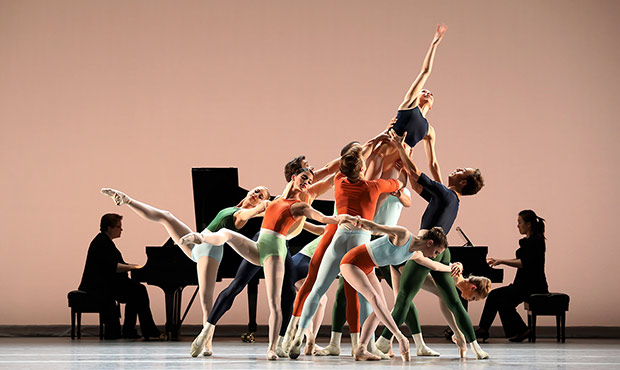
© Amitava Sarkar. (Click image for larger version)
Houston Ballet
The Letter V, Come In, Reflections
★★★★★
New York, City Center
24 October 2019
www.houstonballet.org
www.nycitycenter.org
Houston Ballet is a prime example of what a 21st century ballet company should look like: diverse, dynamic and accomplished. Australian choreographer Stanton Welch, in charge since 2012, appears to have done an exemplary job in leading this troupe which doesn’t come to New York often enough (and hasn’t been at City Center since 1986). Celebrating their 50th anniversary this year, the United States’ fifth largest ballet troupe is a force to be reckoned with and an absolute delight to watch.
The au courant mixed bill was bookended by two Houston Ballet commissions never before seen in New York: Mark Morris’ The Letter V from 2015, and Justin Peck’s 2019 work Reflections. Come In, by hip Canadian choreographer Aszure Barton, sat happily between them.

© Amitava Sarkar. (Click image for larger version)
Haydn’s Symphony No. 88 in G Major was Morris’ choice for The Letter V, and Morris uses its pastoral mood to give us a suite of four dances imbued with an air of the courtly, genteel, partnered dances of the past via a pagan May Day frolic. None are revolutionary traits for Morris, and yet, I never tire of them. Bodies swirl to the ground in a single sweep in moments of brief, giddy grace. The third, menuetto movement, featured two concentric circles, starting with the men and later joined by the women. Morris’ gay gambol is complex, but the form, order and musicality are so tight any challenge is invisible. His musical intuition leads his movement, and to my eye and ear, there is no choreographer alive today who can match his musicality. The fourth movement (allegro) is peppered with a move that becomes a running gag. Dancers hop swinging their arms and legs forward and back to Haydn’s criminally catchy rondo, their backs still straight, and every time it repeats, the audience laughs a little louder.

© Amitava Sarkar. (Click image for larger version)
Barton’s Come In for an all-male cast is a striking work if a touch affected. Seeing 14 male dancers on stage at once is unusual and the effect is powerful. Statuesque bodies tilt slightly and when they finally, really move in unison it is a sight to behold. The music by Vladimir Martynov mixes orchestral classicism with a touch of post-minimalism. Clad completely in black costumes of Barton’s design (long sleeves and tights – think scuba suit), the dancers gleamed in Leo Banks’ lighting, which added clarity and a sculptural quality. A series of gestures feature throughout (a little too much towards the end) and allude to morning ablutions – a splash of water on the face, a stroke of the hair, the straightening of a tie and touches to the neck carry the most weight. The strictures of society and the rat race hover, and Come In is as aware of these as it is aloof to them. Barton manages to be both austere and sensitive, using movement to emote. Her work is a fantastic vehicle for Houston’s men, with principals Connor Walsh and Charles-Louis Yoshiyama being the most memorable. Gradually Walsh breaks free of whatever formalities inhibit his muted peers, with buoyant, pliable dancing. The beauty of ballet’s use of anatomical geometry was exemplified by Yoshiyama, who dances from the inside out. It is a wonder to watch his legs, arms, fingertips all spiral out from the center of his spine-a balletic and soulful Vitruvian man. His care for classicism appears freeing rather than something to fight against.
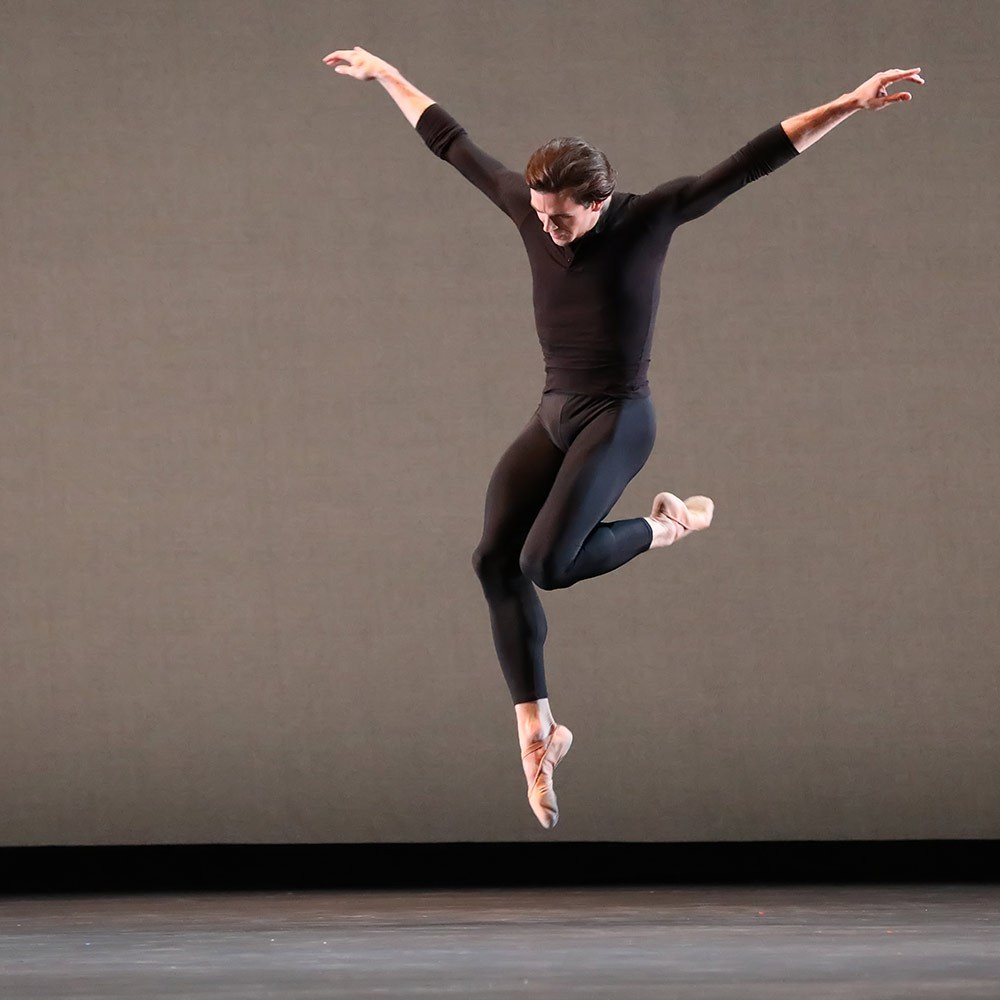
© Amitava Sarkar. (Click image for larger version)
Justin Peck’s Reflections opens with a cluster of bodies center stage in front of two grand pianos playing a commissioned score by Sufjan Stevens. Peck’s number of ballets is probably over 40 now (last year’s count was 37), and at only 30 years old that is surely an accomplishment. His work is usually musical and embraces whimsy. Balanchine and Robbins remain heavy influences, but for the first time in the evening, my mind wandered. The gestural motifs, a sudden striking out of a hand, cute flirtations, felt recycled. Peck’s voice is very much his own, but the question is whether or not that voice needs a breather. That said, this work suits Houston’s dancers well.
The stage lit up when Karina González and Yoshiyama performed a pas de deux of striking chemistry. A streamlined pas focusing on highly balletic steps, Yoshiyama grinned like the Cheshire cat and González was pitch perfect in technique and bravura – sharp but not frigid. One can see the Aurora or Giselle in González (roles she has been praised for), here via Peck, such is her poise and gift for classical line. An earlier trio featuring Yoshiyama, Jessica Collado and Harper Watters was another highlight, particularly for the men, with gorgeous slides to the floor and high leaps. Connor Walsh added the most Broadway flare to the work, fully embracing his sideways lunges with arms fully out.

© Amitava Sarkar. (Click image for larger version)
What makes Houston Ballet so special? Could it be as simple as the fact that the dancers appear happy? Content? Both the Morris and the Peck were upbeat, each in their own way, but even in the deep recesses of Barton’s somber elegance, something radiated out from this company. The dancers were beaming, their only visible vulnerability being that they showed they were hungry, with an appetite for challenging choreography beyond what they brought to New York.












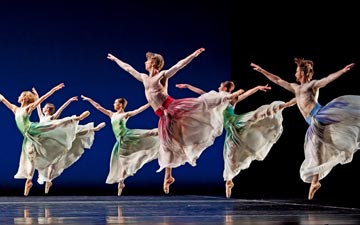

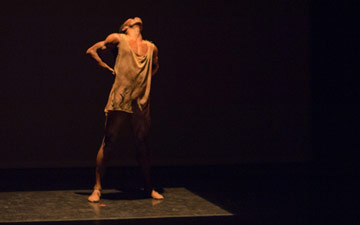

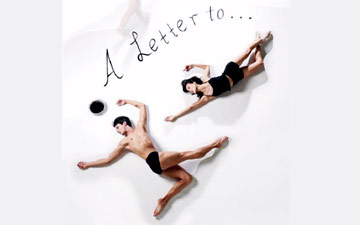
You must be logged in to post a comment.